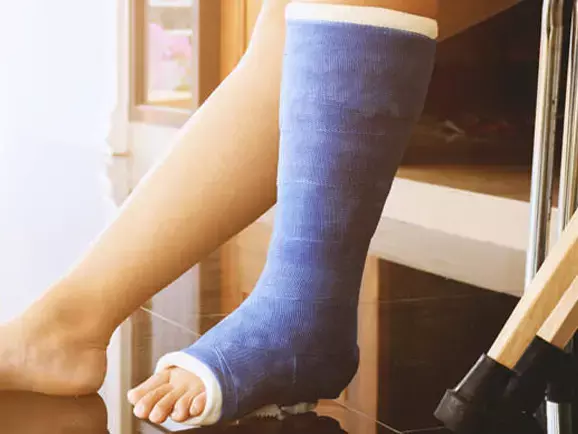- Home
- Medical news & Guidelines
- Anesthesiology
- Cardiology and CTVS
- Critical Care
- Dentistry
- Dermatology
- Diabetes and Endocrinology
- ENT
- Gastroenterology
- Medicine
- Nephrology
- Neurology
- Obstretics-Gynaecology
- Oncology
- Ophthalmology
- Orthopaedics
- Pediatrics-Neonatology
- Psychiatry
- Pulmonology
- Radiology
- Surgery
- Urology
- Laboratory Medicine
- Diet
- Nursing
- Paramedical
- Physiotherapy
- Health news
- Fact Check
- Bone Health Fact Check
- Brain Health Fact Check
- Cancer Related Fact Check
- Child Care Fact Check
- Dental and oral health fact check
- Diabetes and metabolic health fact check
- Diet and Nutrition Fact Check
- Eye and ENT Care Fact Check
- Fitness fact check
- Gut health fact check
- Heart health fact check
- Kidney health fact check
- Medical education fact check
- Men's health fact check
- Respiratory fact check
- Skin and hair care fact check
- Vaccine and Immunization fact check
- Women's health fact check
- AYUSH
- State News
- Andaman and Nicobar Islands
- Andhra Pradesh
- Arunachal Pradesh
- Assam
- Bihar
- Chandigarh
- Chattisgarh
- Dadra and Nagar Haveli
- Daman and Diu
- Delhi
- Goa
- Gujarat
- Haryana
- Himachal Pradesh
- Jammu & Kashmir
- Jharkhand
- Karnataka
- Kerala
- Ladakh
- Lakshadweep
- Madhya Pradesh
- Maharashtra
- Manipur
- Meghalaya
- Mizoram
- Nagaland
- Odisha
- Puducherry
- Punjab
- Rajasthan
- Sikkim
- Tamil Nadu
- Telangana
- Tripura
- Uttar Pradesh
- Uttrakhand
- West Bengal
- Medical Education
- Industry
Removable brace effective alternative to traditional plaster cast for patients with ankle fracture

A. Haque et al conducted a study to compare the longer-term outcomes of operatively and non operatively managed patients treated with a removable brace (fixed-angle removable orthosis) or a plaster cast immobilization for an acute ankle fracture. The study was conducted at ‘Warwick University, Coventry, UK’ and published in “THE BONE & JOINT JOURNAL.”
This is a secondary analysis of a multicentre randomized controlled trial comparing adults with an acute ankle fracture, initially managed either by operative or nonoperative care. Patients were randomly allocated to receive either a cast immobilization or a fixed-angle removable orthosis (removable brace). Data were collected on baseline characteristics, ankle function, quality of life, and complications. The Olerud-Molander Ankle Score (OMAS) was the primary outcome which was used to measure the participant’s ankle function. The primary endpoint was at 16 weeks, with longer-term follow-up at 24 weeks and two years.
Key findings of the study were:
• Overall, 436 patients (65%) completed the final two-year follow-up.
• 216 remained in the cast group and 220 patients in the brace group.
• The mean difference in OMAS at two years was -0.3 points favouring the plaster cast (95% confidence interval -3.9 to 3.4), indicating no statistically significant difference between the interventions.
• There was no evidence of differences in patient quality of life (measured using the EuroQol five dimension five-level questionnaire) or Disability Rating Index.
The authors concluded that – “This study demonstrated that patients treated with a removable brace had similar outcomes to those treated with a plaster cast in the first two years after injury. A removable brace is an effective alternative to traditional immobilization in a plaster cast for patients with an ankle fracture.”
Take home message stated by the authors was – “ A removable brace is as effective as traditional immobilization in a plaster cast for patients with an ankle fracture. This applies long-term to patients treated both operatively and nonoperatively.”
Further reading:
Use of cast immobilization versus removable brace in adults with an ankle fracture: two year follow-up of a multicentre randomized controlled trial, A. Haque, H. Parsons et al, THE BONE & JOINT JOURNAL, Bone Joint J 2023;105-B(4):382–388.
MBBS, Dip. Ortho, DNB ortho, MNAMS
Dr Supreeth D R (MBBS, Dip. Ortho, DNB ortho, MNAMS) is a practicing orthopedician with interest in medical research and publishing articles. He completed MBBS from mysore medical college, dip ortho from Trivandrum medical college and sec. DNB from Manipal Hospital, Bengaluru. He has expirence of 7years in the field of orthopedics. He has presented scientific papers & posters in various state, national and international conferences. His interest in writing articles lead the way to join medical dialogues. He can be contacted at editorial@medicaldialogues.in.
Dr Kamal Kant Kohli-MBBS, DTCD- a chest specialist with more than 30 years of practice and a flair for writing clinical articles, Dr Kamal Kant Kohli joined Medical Dialogues as a Chief Editor of Medical News. Besides writing articles, as an editor, he proofreads and verifies all the medical content published on Medical Dialogues including those coming from journals, studies,medical conferences,guidelines etc. Email: drkohli@medicaldialogues.in. Contact no. 011-43720751


